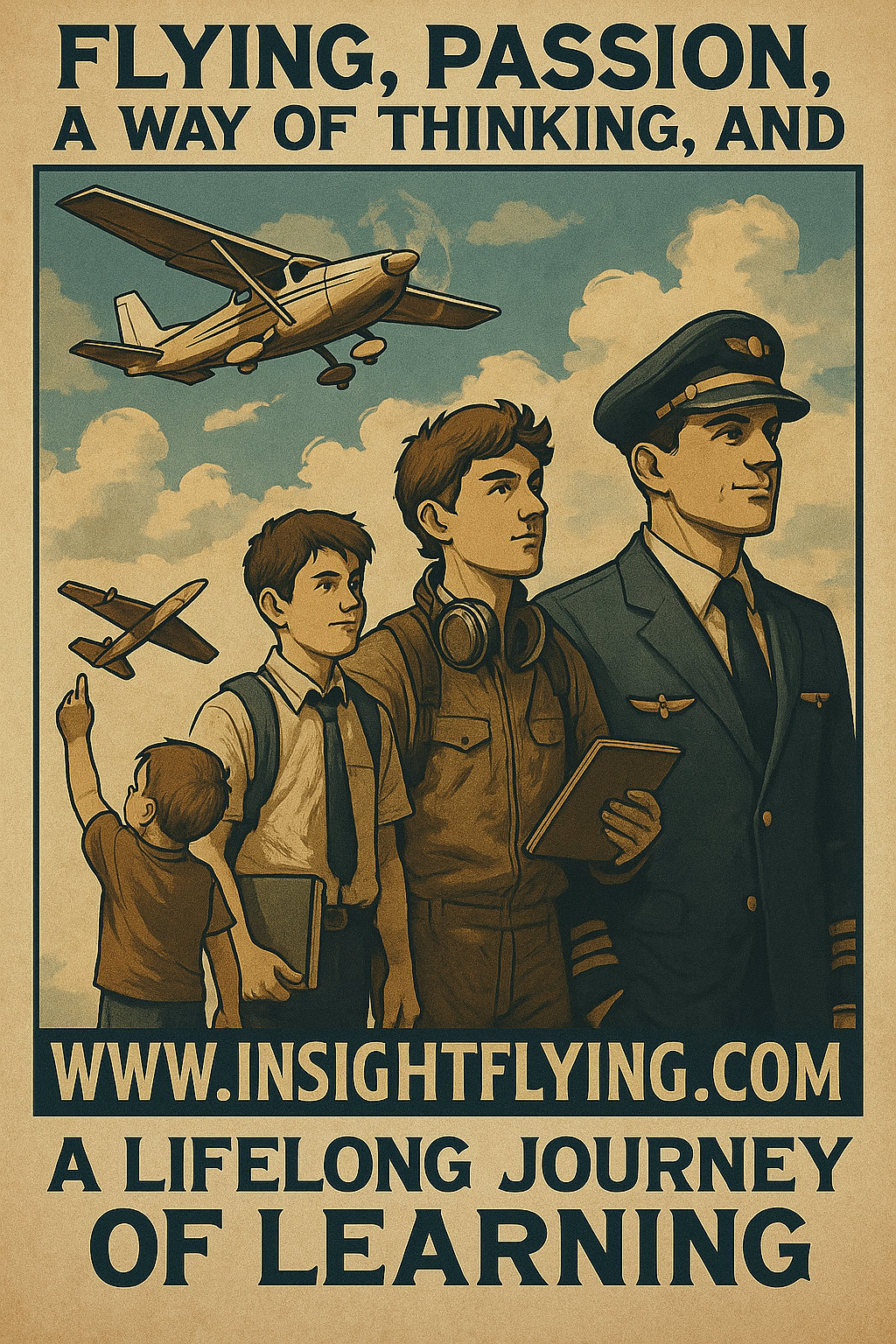Today, the profession of airline pilot has become more accessible than ever. University graduates, even from faculties unrelated to aviation, can now pursue a career in commercial flying. Many airlines regularly open recruitment for “Student Pilots”—candidates without prior flight experience.
Once selected, Student Pilots are sponsored and sent to partner flight schools to undergo structured training programs. The training path leads them toward the Commercial Pilot Licence (CPL), after which they return to the airline for company-specific training before beginning their professional flying career.
Each airline sets its own recruitment requirements and contractual obligations. For example, some may require a minimum number of years of service after training, while others impose financial penalties if a pilot resigns early. In certain cases, airlines deduct a portion of salary over time to recover the cost of training.
University Pathways and “Qualified Pilots”
In addition to airline-sponsored programs, several universities now offer integrated aviation degree programs that combine academic study with professional pilot training. Graduates from these programs emerge as “Qualified Pilots”—individuals who already hold a CPL with sufficient flight hours to apply directly to airlines.
Qualified Pilots may also have earned their CPL through self-funded training at accredited flight schools. The Civil Aviation Authority of Thailand (CAAT) maintains an updated list of approved flight training organizations:
👉 CAAT Accredited Flight Schools
Airlines typically recruit such candidates once or twice a year, though in recent years recruitment cycles have become more frequent due to rising demand.
Type Rating and Mobility Between Airlines
Within the category of Qualified Pilots, two important terms describe readiness for airline operations: “Type Rated” and “Non-Type Rated.”
- On Type Rating – A pilot already trained and experienced on a specific aircraft type that an airline operates (e.g., Airbus A320). Transitioning to another airline using the same aircraft type usually requires only abbreviated training.
- Non-Type Rating – A pilot experienced on one aircraft type (e.g., Boeing 747) but transitioning to a different aircraft type (e.g., Airbus A320). This requires a full type rating course on the new aircraft model.
Regardless of background, all pilots must complete the new airline’s internal training before being released to line flying.
For more advanced positions, such as Captains, additional requirements include:
- Minimum total flight hours (e.g., 3,000–5,000 hours).
- Airline Transport Pilot Licence (ATPL).
- Class 1 Medical Certificate.
- ICAO English Language Proficiency Level 4 or higher.
Global Mobility and Market Demand
Over the past decade, pilot mobility has increased significantly. Thai pilots, both type rated and non-type rated, have moved to airlines in the Middle East and across Asia. More recently, there has also been movement within Thailand itself, as domestic airlines expand and compete for talent.
This mobility is largely driven by supply and demand: while airlines in Asia-Pacific continue to grow rapidly, the production of new pilots has not always kept pace. Neighboring markets such as China, Korea, Taiwan, Vietnam, Myanmar, and Indonesia are constantly seeking well-trained pilots—including Thai pilots.
Even in the United States, pilot shortages persist due to high retirement rates.
According to the Boeing Pilot & Technician Outlook 2025–2044, the world will need about 660,000 new commercial pilots over the next 20 years, with 41% of that demand coming from the Asia-Pacific region. Meanwhile, CAE’s 10-year forecast anticipates 267,000 new commercial pilots needed globally within the next decade, with one-third of today’s pilots expected to retire.
The Strategic Role of Thailand
If Thailand can sustain steady progress in aviation development, its geographic advantage positions it well to become a regional hub. After the transition from the Department of Civil Aviation to the Civil Aviation Authority of Thailand (CAAT), and the subsequent removal of ICAO’s “red flag” status, the regulatory environment has strengthened. This provides a foundation for further growth in Thailand’s aviation sector.
With regional demand accelerating, Thailand’s pilot workforce—already well-regarded for skill and adaptability—has strong opportunities both domestically and internationally.
เส้นทางสู่อาชีพนักบินในปัจจุบัน
ปัจจุบัน อาชีพนักบินพาณิชย์เปิดกว้างมากขึ้นกว่าเดิม แม้ผู้ที่จบการศึกษาระดับปริญญาตรีจากคณะหรือมหาวิทยาลัยที่ไม่ได้มีหลักสูตรการบิน ก็สามารถก้าวเข้าสู่อาชีพนักบินได้ ผ่านการสมัครเป็น “Student Pilot” กับสายการบินต่าง ๆ ที่มีการประกาศรับสมัครอยู่เป็นระยะ
เมื่อผ่านการคัดเลือกแล้ว สายการบินจะส่งตัวผู้สมัครไปฝึกอบรมกับโรงเรียนการบินที่เป็นพันธมิตร โดยมีเส้นทางการฝึกอบรมอย่างเป็นลำดับ จนได้รับ ใบอนุญาตนักบินพาณิชย์ตรี (Commercial Pilot Licence: CPL) ก่อนที่จะกลับมาบรรจุเข้าทำงานกับสายการบิน และเข้ารับการฝึกตามมาตรฐานของแต่ละบริษัทต่อไป
ทั้งนี้ เงื่อนไขและข้อผูกพันในการทำงานแตกต่างกันไปตามนโยบายของแต่ละสายการบิน เช่น กำหนดให้ผู้จบการฝึกต้องทำงานกับบริษัทไม่น้อยกว่ากี่ปี หรือหากลาออกก่อนครบกำหนด จะต้องชดใช้ค่าใช้จ่ายในการฝึกอบรมที่บริษัทออกให้ ซึ่งบางสายการบินอาจใช้วิธีหักเงินเดือนคืนเป็นรายเดือนแทน
มหาวิทยาลัยและเส้นทางสู่ “Qualified Pilot”
นอกเหนือจากโครงการ Student Pilot ปัจจุบันหลายมหาวิทยาลัยได้เปิดหลักสูตรปริญญาควบคู่กับการเรียนการบิน เช่น คณะวิศวกรรมศาสตร์หรือคณะวิทยาศาสตร์ โดยผู้สำเร็จการศึกษาจะได้ทั้งปริญญาบัตรและคุณสมบัติเป็น “Qualified Pilot” ซึ่งหมายถึงนักบินที่มีใบอนุญาตนักบินพาณิชย์ตรี (CPL) พร้อมชั่วโมงบินที่เพียงพอสำหรับสมัครงานกับสายการบินได้ทันที
Qualified Pilot อาจมาจากการเรียนด้วยตนเองโดยจ่ายค่าใช้จ่ายกับโรงเรียนการบินที่ได้รับการรับรองจาก สำนักงานการบินพลเรือนแห่งประเทศไทย (CAAT) สามารถตรวจสอบรายชื่อโรงเรียนการบินได้ที่นี่:
👉 โรงเรียนการบินที่ได้รับการรับรองจาก CAAT
สายการบินมักจะเปิดรับ Qualified Pilot ปีละหนึ่งครั้ง หรือในบางช่วงปีที่มีความต้องการสูง อาจมีมากกว่าหนึ่งรอบ
Type Rating และการโยกย้ายนักบินระหว่างสายการบิน
ในกลุ่ม Qualified Pilot จะมีคำศัพท์เฉพาะที่ใช้บ่อยคือ “Type Rated” และ “Non-Type Rated”
- Type Rated – หมายถึงนักบินที่มีประสบการณ์หรือผ่านการฝึกบนเครื่องบินรุ่นที่สายการบินใช้งานอยู่ เช่น Airbus A320 หากย้ายไปสายการบินที่ใช้รุ่นเดียวกัน ก็เพียงต้องเข้ารับการฝึกเสริมตามมาตรฐานของสายการบินใหม่ ซึ่งใช้เวลาน้อยกว่าผู้ที่ไม่เคยบินรุ่นนั้นมาก่อน
- Non-Type Rated – หมายถึงนักบินที่เคยบินเครื่องบินรุ่นหนึ่ง แต่จะย้ายไปบินเครื่องบินรุ่นอื่น เช่น จาก Boeing 747 ไป Airbus A320 จำเป็นต้องเข้ารับการฝึกใหม่เต็มรูปแบบ
อย่างไรก็ตาม ไม่ว่านักบินจะมีประสบการณ์มาก่อนแค่ไหน ทุกคนยังคงต้องผ่านการฝึกอบรมตามมาตรฐานของสายการบินใหม่ก่อนที่จะสามารถทำการบินได้
สำหรับตำแหน่งกัปตันหรือการสมัครในระดับสูง มักจะมีข้อกำหนดเพิ่มเติม เช่น
- ชั่วโมงบินขั้นต่ำ 3,000–5,000 ชั่วโมง
- ใบอนุญาตนักบินพาณิชย์เอก (ATPL: Airline Transport Pilot Licence)
- ใบรับรองแพทย์เวชศาสตร์การบิน ระดับที่หนึ่ง (Class 1 Medical Certificate)
- ใบรับรองความสามารถภาษาอังกฤษระดับ 4 ขึ้นไป (ICAO English Proficiency Level 4+)
ความต้องการนักบินในตลาดโลก
ในช่วงสิบปีที่ผ่านมา การโยกย้ายสายการบินของนักบินเพิ่มขึ้นอย่างต่อเนื่อง โดยเฉพาะนักบินไทยที่เดินทางไปทำงานกับสายการบินในตะวันออกกลางและภูมิภาคเอเชีย เช่น จีน เกาหลี ไต้หวัน เวียดนาม พม่า และอินโดนีเซีย ขณะเดียวกันภายในประเทศไทยเองก็มีการย้ายงานระหว่างสายการบินมากขึ้น เนื่องจากการแข่งขันและการขยายฝูงบิน
สถานการณ์นี้เกิดขึ้นจาก ความต้องการนักบินทั่วโลกที่ยังสูงกว่ากำลังการผลิตนักบินใหม่ โดยเฉพาะในเอเชีย-แปซิฟิกที่อัตราการเติบโตสูงกว่าภูมิภาคอื่น
แม้กระทั่งในสหรัฐอเมริกาเอง ปัญหาการขาดแคลนนักบินก็ยังคงรุนแรงจากการเกษียณอายุจำนวนมาก
ตามรายงาน Boeing Pilot & Technician Outlook 2025–2044 คาดการณ์ว่า ทั่วโลกจะต้องการนักบินพาณิชย์ใหม่กว่า 660,000 คนภายใน 20 ปีข้างหน้า โดยภูมิภาคเอเชีย-แปซิฟิกคิดเป็นถึง 41% ของความต้องการทั้งหมด ขณะเดียวกัน รายงานของ CAE ยังระบุว่า ภายใน 10 ปีข้างหน้า ทั่วโลกจะต้องการนักบินพาณิชย์ใหม่กว่า 267,000 คน และนักบินที่ปัจจุบันปฏิบัติหน้าที่อยู่ถึงหนึ่งในสามจะทยอยเกษียณอายุ
บทบาทเชิงยุทธศาสตร์ของประเทศไทย
หากประเทศไทยสามารถพัฒนาธุรกิจการบินได้อย่างต่อเนื่อง จุดแข็งด้านทำเลที่ตั้งซึ่งเหมาะสมต่อการเป็นศูนย์กลางการบินในภูมิภาค จะช่วยสร้างโอกาสทางเศรษฐกิจอย่างมหาศาล
การเปลี่ยนผ่านจากกรมการบินพลเรือนสู่ สำนักงานการบินพลเรือนแห่งประเทศไทย (CAAT) และความสำเร็จในการปลด “ธงแดง” ของ ICAO ถือเป็นหมุดหมายสำคัญที่ทำให้ประเทศไทยกลับมามีมาตรฐานการกำกับดูแลที่น่าเชื่อถือ และเป็นพื้นฐานที่ดีต่อการเติบโตของอุตสาหกรรมการบินไทยในอนาคต

Leave a Reply
You must be logged in to post a comment.